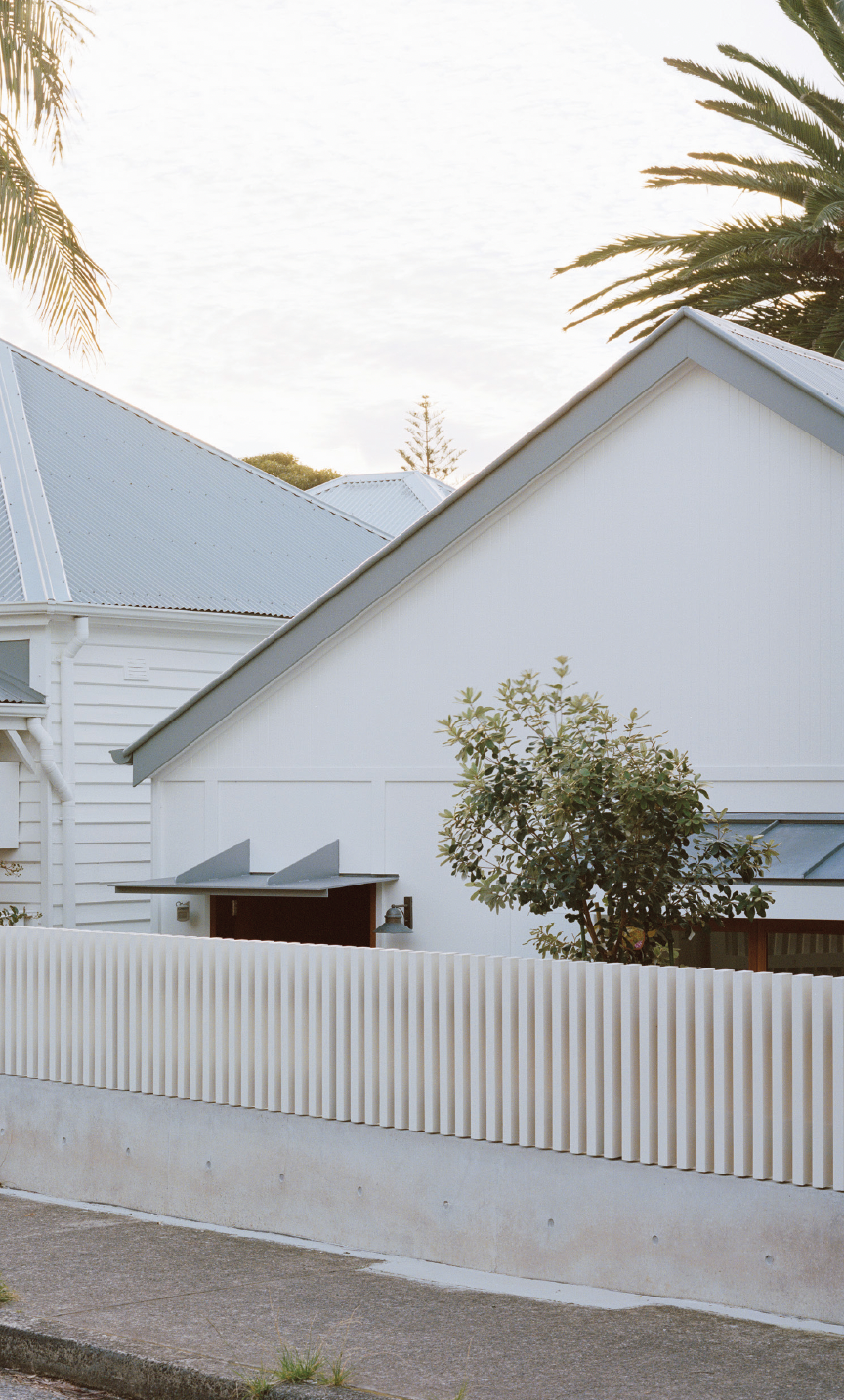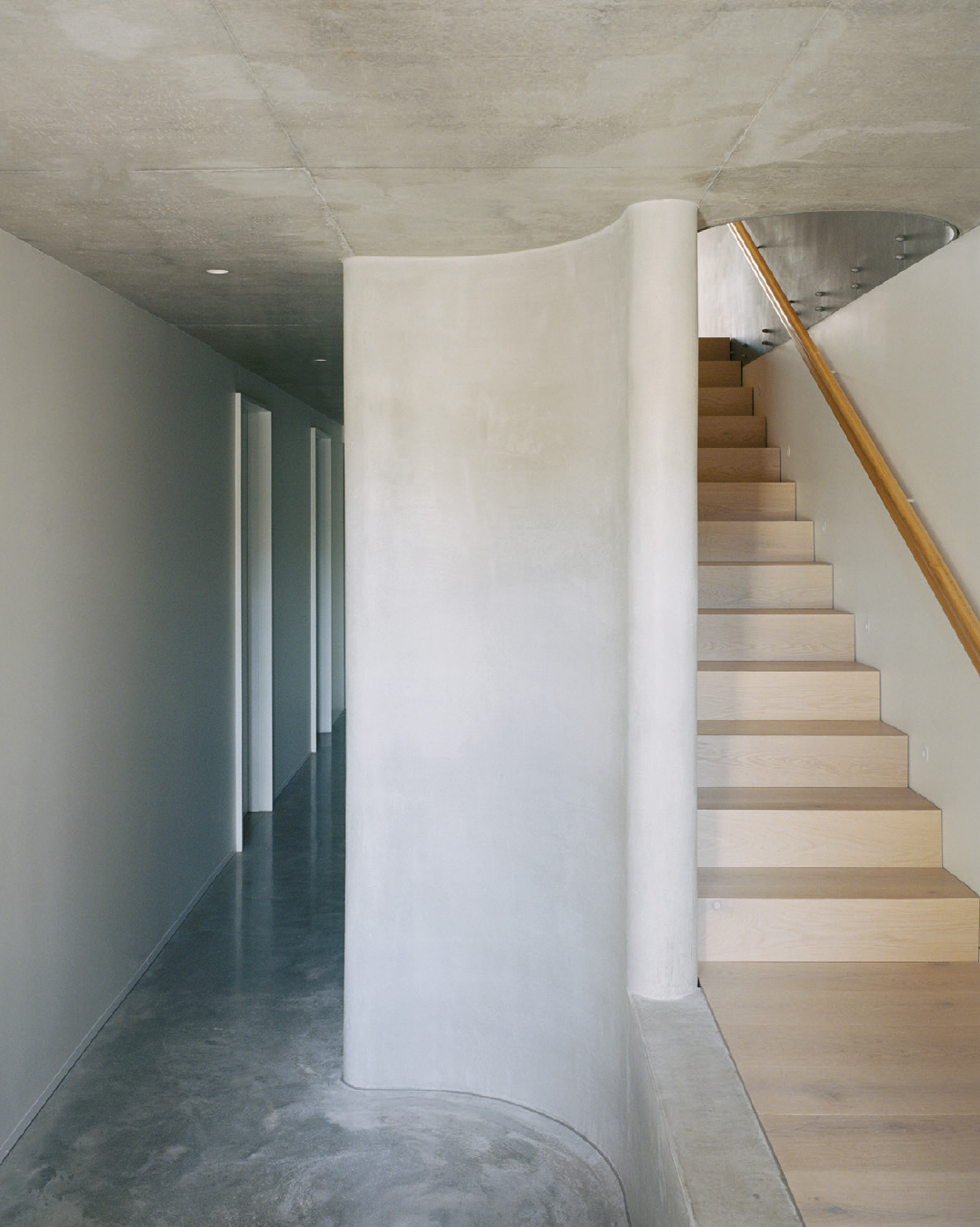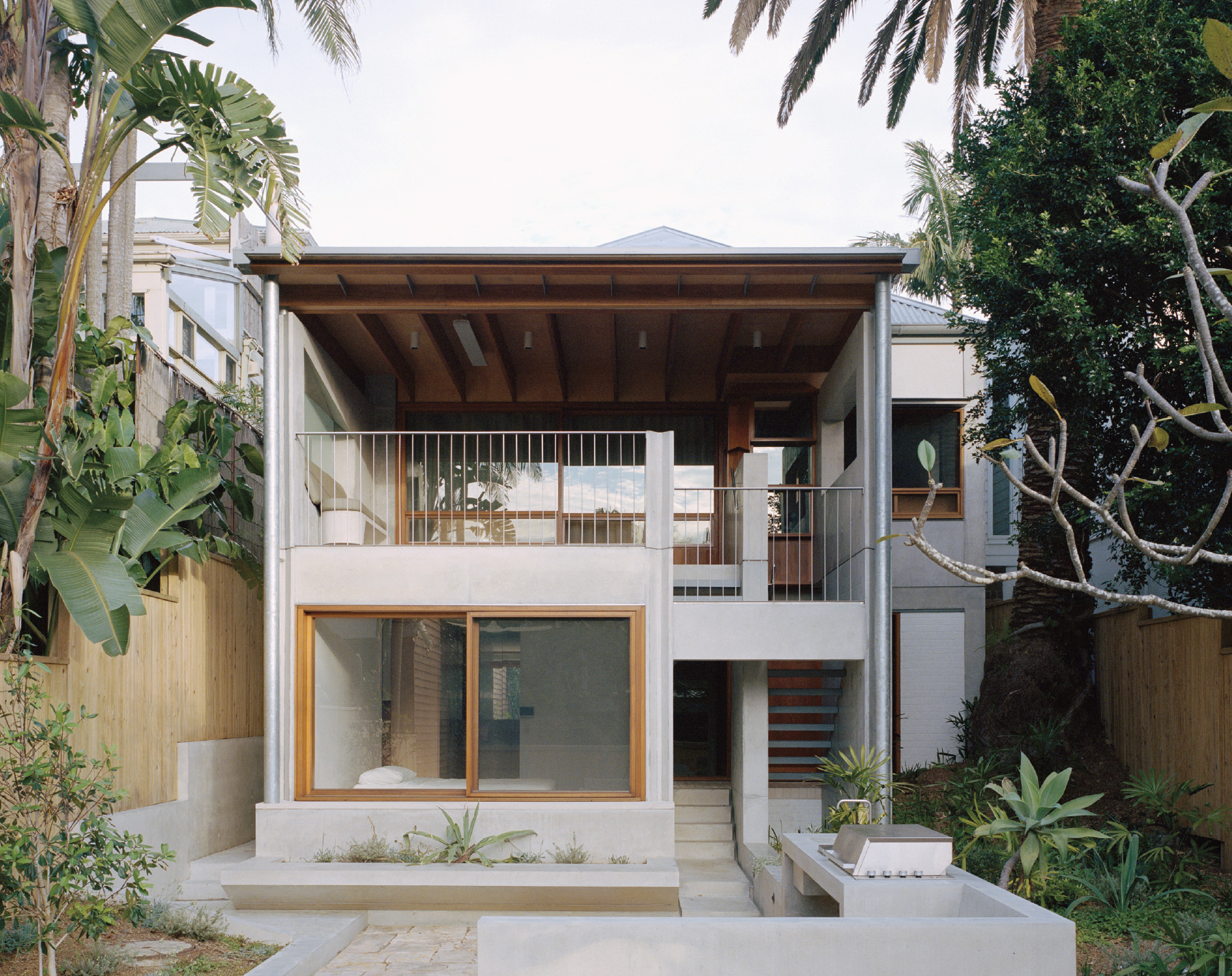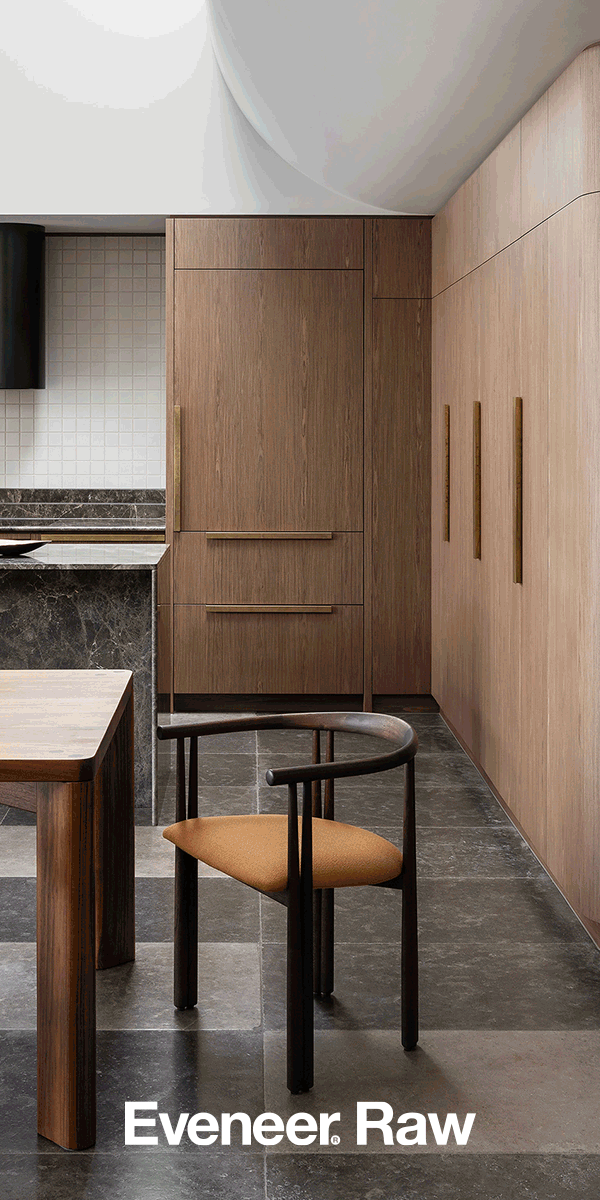Leopold Banchini’s first Australian project hovers in unplugged and off-grid splendour above an alluvial Walden. Through conversations with the...
Lee House
The modest dimensions of Lee House belie the care with which architect Angelo Candalepas approached its design. With thoughtful nods to the cottage’s heritage, this humble home embraces connectedness within and without, to self, land and sky.
Essay
Chris Mullaney
Photography
Rory Gardiner
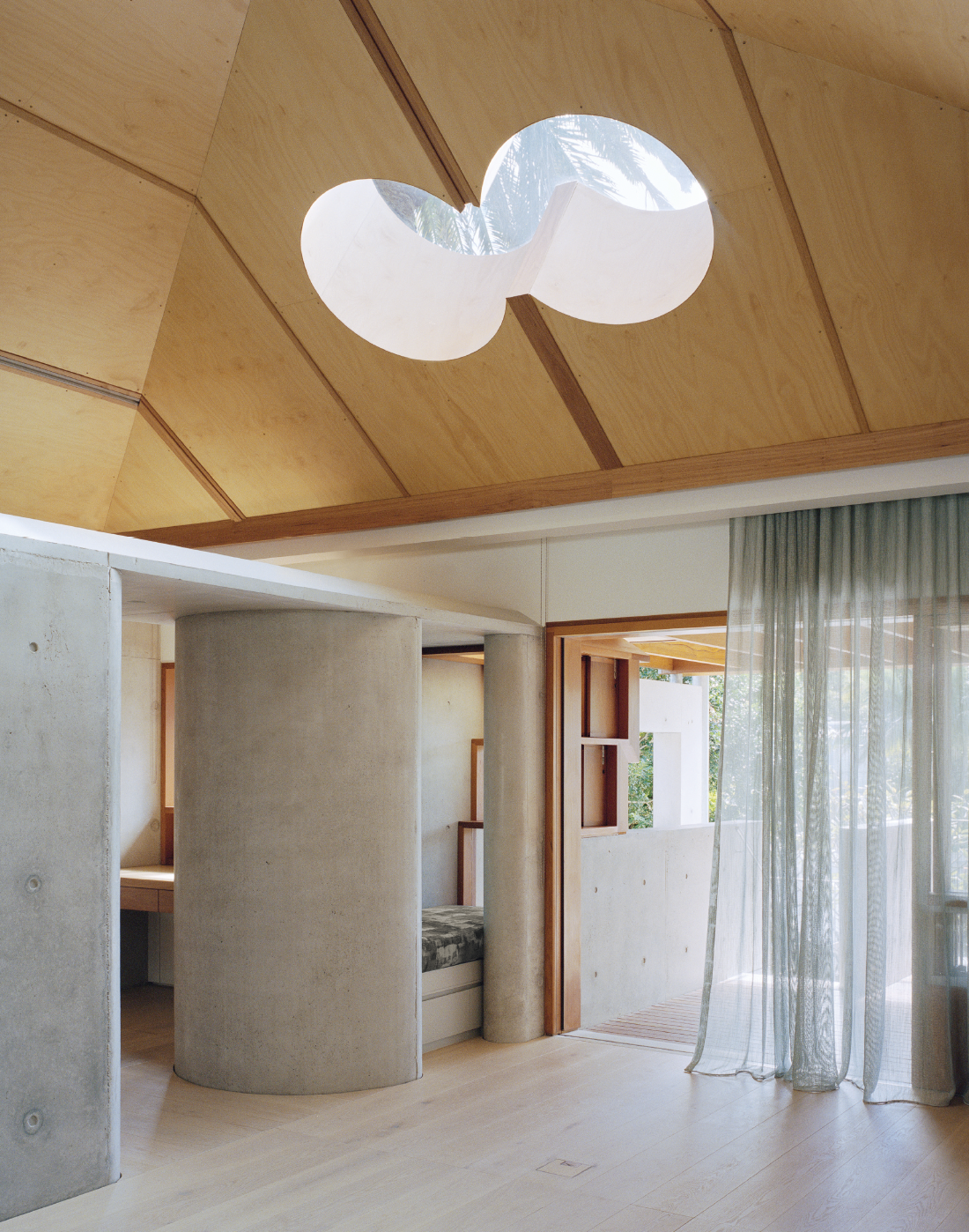
Candalepas Associates’ work in the residential sphere is primarily concerned with apartment buildings. In this domain, their commitment to the street and the craft of architecture is manifest many times over. Unfortunately, under the prevailing ‘wisdom’ of building procurement, they are often not engaged to complete the interiors of their designs. Thus, while the typology of the single residential house may not be a focus for the studio, it can perhaps offer a more complete opportunity to meditate on the human condition, our place in the universe, and our connection to nature and to each other. What might be the minimum requirements for one to live a ‘good’ life? And how is that ultimately a very public concern?
The Lee House is situated in Camp Cove, near the entrance to Sydney Harbour. It is historically significant as a place of the Cadigal (Gadigal) people, and later as the probable site of first landfall by Europeans in Sydney harbour.1 A journey to Camp Cove, at the tip of Sydney’s eastern suburbs, is now a tour of the city’s most prized real estate locations – and all the excess and trappings that come with the status.
It is therefore of note that Lee House has a modest but dignified presentation to the street. A fisherman’s cottage restored with a timber framed roof that belies its humble construction methods: new-painted timber weatherboard cladding and fibre cement sheets with timber battens. On this point, Angelo Candalepas reflects on the imprint that our house leaves on our mind and on the world – it is our subconscious window onto the world and its window onto us, and so there is great importance to having modesty in this equation.
The house is relatively small, at least in context. Comprising only three bedrooms and one living room, it eschews the proliferation of base units to which ‘value’ is attributed in today’s real-estate market – a convention that doggedly undermines most architects’ pursuit for a more compact model of housing. Tasked with a brief to create a quiet place, settled and in repose, the project encouraged conversations around more primary issues, essential questions about how we live and what is important. As Epictetus, the great stoic philosopher, said: “Wealth consists not in having great possessions, but in having few wants.”
The interiors of Lee House recall this wondrously delicate position of having just enough of everything. It is perhaps no surprise then that the project was 12 years in the making; such efforts towards refinement can only be achieved with the benefit of time.
Arriving on the upper level, the more public areas of the house enjoy the generous, singular volume of the pitched roof. Discrete moments are created by a lower concrete wall – a wall that is thick, sculpted, inhabitable that divides the space. It accommodates kitchen joinery, storage, a small toilet and a daybed culminating in a delightful stepped window that balances outlook and a sense of privacy, with tactile ventilation shutters set to one side.
On one side of the wall is a small study nook. Here, an opening provides connection back to the living room while a larger window overlooks the garden, encouraging the occupant to feel at one with both the building and their surrounds. On the larger side of this division is the kitchen, dining and living room sequence, ending at a covered deck. The house does not have any particular views, as do some nearby, but perhaps that is more fitting for a place of introspection. Curiously, the wall locations of the original cottage are marked by a change in floor finish, acknowledging what was once present and subtly reminding the occupant of their own position in time, a custodian of this place for future generations.
Which brings us to the larger theme of existentialist enquiry embedded in the house: the subjugation of self and the importance of solitude to our wellbeing and to the contribution we make to society. Candalepas makes reference to the 1854 book Walden by American writer Henry David Thoreau, a detailed account of Thoreau’s experience of self reliance while living in a small cabin he built in woodland near Walden Pond. In it, Thoreau reflects on the importance of solitude, the pleasure of escaping society and the trivial concerns it often entails. He explores how solitude and a deep communion with nature can ultimately make us better people and in turn improve our public interactions. As Thoreau so elegantly explains:
“I went to the woods because I wished to live deliberately, to front only the essential facts of life, and see if I could not learn what it had to teach, and not, when I came to die, discover that I had not lived. I did not wish to live what was not life, living is so dear; nor did I wish to practice resignation, unless it was quite necessary.”2
While this comfortable residence in modern day Camp Cove may be a far cry from Thoreau’s cabin near Walden Pond in the mid 1800s, Lee House has shared aspirations. Here, the design of a skylight – or rather a window onto the sky – is a consequential thing. It is an aperture that avoids the ubiquitous indifference of most modern skylight designs. It asks the viewer to feel something; it evokes memories. For my part, I am reminded of a quiet afternoon visit to Carlo Scarpa’s Tomba Brion where a similar motif of intersecting circles is used to symbolise the union of two people and doubles as a viewing device to the private burial grounds. It is another work of architecture that meditates on the essential questions of life and death; another work of solitude. As Thoreau articulates, the ambition to feel connected to something more significant than ourselves is a sublime act.
I do not think an architect can guarantee such revelations – nor can I confirm the success of such endeavours here, worthy though they may be. On this matter, I think I will let Candelapas have the last word on his role: “I want to make observations of the world and about what I see as the relevant aspects of living and then project them into the work and ask people if that’s a valid way of seeing. If it is a valid way of seeing, then like great poetry they will understand it as though it is their own, but if it is not, it will fail.”3
1. Robin Derricourt, Camp Stove (State Library of New South Wales: Dictionary of Sydney, 2008).
2. Henry David Thoreau, Walden (London: Walter Scott, 1886), 88.
3. Angelo Candalepas, interview with author, July 8, 2022.
